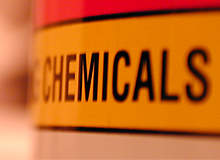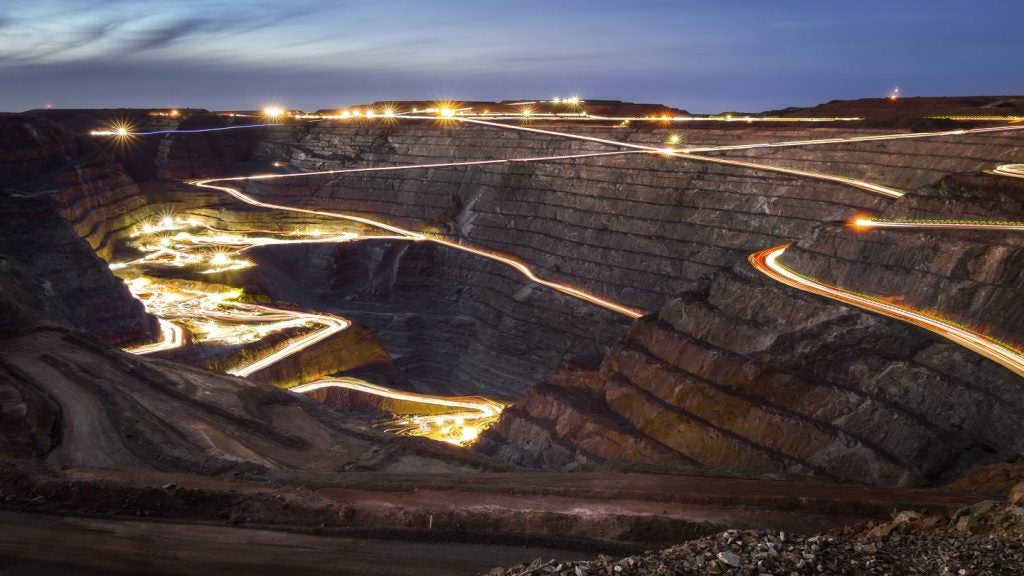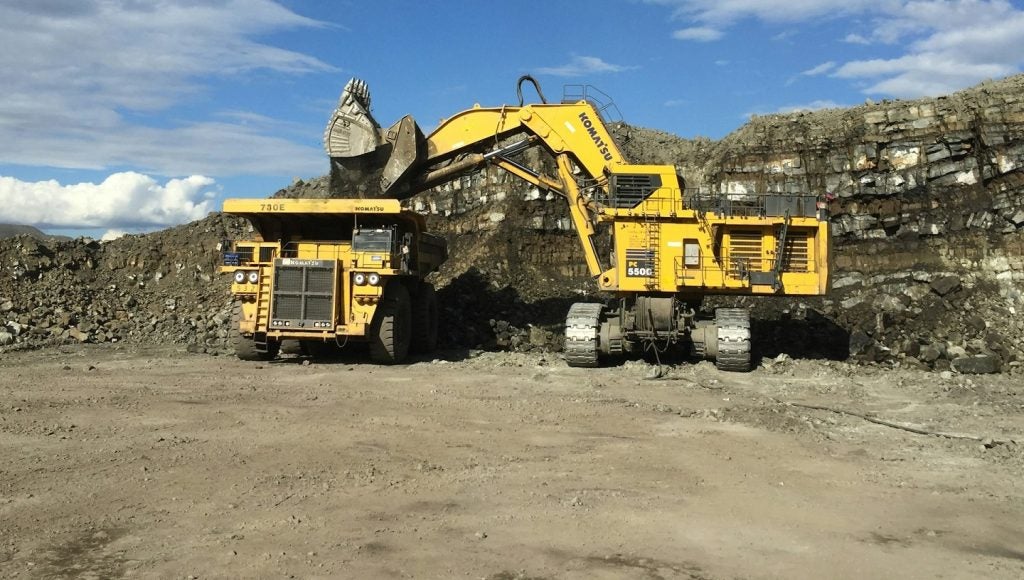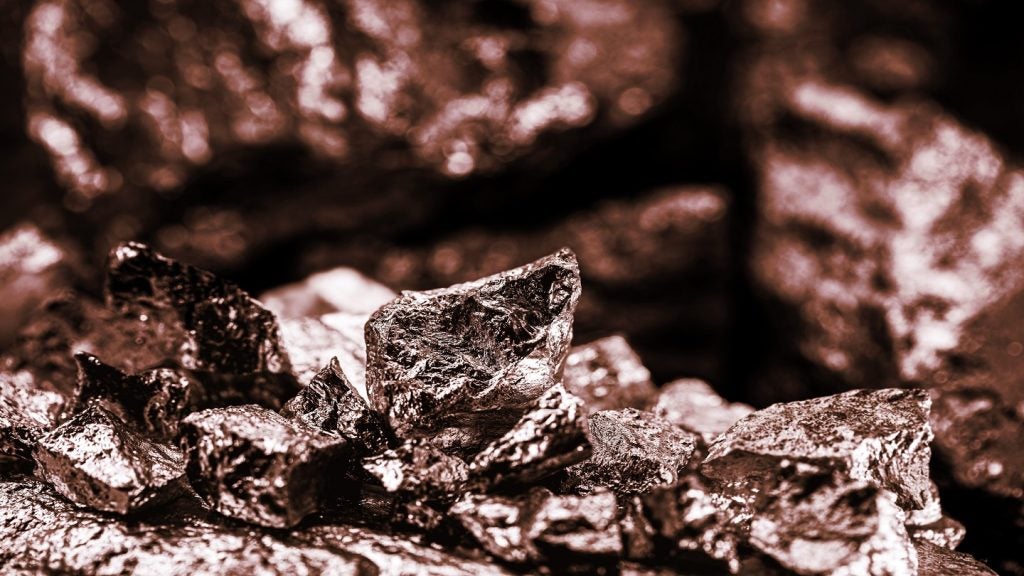
The international mining industry was hit hard by the global recession of 2007-09, leaving many companies struggling to survive. But growing demand for metals, as well as emerging markets such as China and India, has brought the industry back on track. In particular, chemicals and reagents that boost the productivity and efficiency of mining processes have seen a boom.
The economic downturn badly affected the demand for mining chemicals, with the US and Europe bearing the burden of the declines, and Asia-Pacific also witnessing a slower growth in 2009. However, according to a 2010 report by US-based Global Industry Analysts, the value of the international mining chemicals market is expected to exceed $10.5bn by 2015.
"The global financial crisis had a detrimental impact on the use of chemicals in the industry as plants were mothballed or run at reduced capacities," says Martin Neale, global strategy manager for mining and global marketing industry manager at BASF. The UK-based company, which provides chemicals to the global mining industry, has also experienced the downturn.
In 2010 companies saw moderate growth, and the forecast for 2011 is strong as global demand for base and precious metals has continued to climb. "Prior to the crisis, demand for chemical reagents was high ? this demand has since returned, especially for value-adding chemistry that allows, for example, customers to run at higher throughput," Neale explains.
Breathing new life into dead mines
Mining chemicals and reagents play a vital role in mineral extraction. Increased mining activity naturally pushes the demand for chemicals, which include hydrocarbon collectors based on developmental and traditional sulphur, depressant chemistry, frothers, acid-resistant coatings, proprietary extender oils and high-purity solvent extraction diluents. The market also includes explosives and explosive accessories such as detonators and fuses.
See Also:
While Asia-Pacific and the US dominate the global mining chemicals market, the explosives and drilling sector is the largest and fastest growing market for chemicals and reagents worldwide. Processing chemicals represents the second largest application for mining chemicals.
How well do you really know your competitors?
Access the most comprehensive Company Profiles on the market, powered by GlobalData. Save hours of research. Gain competitive edge.

Thank you!
Your download email will arrive shortly
Not ready to buy yet? Download a free sample
We are confident about the unique quality of our Company Profiles. However, we want you to make the most beneficial decision for your business, so we offer a free sample that you can download by submitting the below form
By GlobalDataMartin Court, process separation vice-president at US-based mining chemical provider Cytec Industries, says that many industrial markets use chemicals to improve beneficiation, or allow it to take place. "Most metals markets are growing with particular focus on copper, aluminium, gold, silver and rare earths," he notes.
One major benefit that comes with the use of chemicals and reagents is the possibility to ‘breathe new life’ into dead deposits. Advanced technology and the continued rise in the price of commodities has made deposits previously thought uneconomic to mine potentially attractive. This is particularly in the industrial mineral sector where demand has been outstripping the supply in many cases.
"New reagents open up new opportunities for mining companies," Court says. "With metal prices at all-time highs, it’s becoming more economical to try to extract metals from marginal deposits."
The other area of interest for the use of chemicals and reagents is the opportunity to extract more ‘exotic’ materials, which the industry has not seen in the past. As Paul Gould, global head of marketing and applications at Clariant Mining Services, explains: "If you look at the substances that are used in batteries and some advanced electronics, we’ve all seen those particular markets grow very, very strongly. So, people are interested in not only in traditional metals but also in these more exotic ones, and investment is increasingly going into trying to find those deposits.
"They are deposits that weren’t economic in the past, they now become economic and people are beginning to invest in those deposits."
Environmental concerns
Despite the mining industry’s reawakened economic importance, the use of chemicals and reagents for the extraction of minerals does not remain without consequences. Environmental issues have been part of the industry since its beginnings ? the use of chemicals and reagents, however, has aggregated concerns among environmentalist groups and critics.
Chemicals like mercury, cyanide, sulphuric acid, arsenic and methyl mercury are used in various stages of mining. Most of these chemicals are released into waters near the mines, which can lead to water pollution.
Despite the use of tailings or pipes to dispose the chemicals into rivers, leakages are said to occur regularly. Leaked chemicals, infiltrating the earth, could therefore reach the groundwater and pollute it.
Moreover, the chemicals can also make the soil unsuitable for plants to grow. Organisms living in the soil may find the polluted environment hostile for their survival’ and the release of toxic chemicals into water can also be damaging for the vegetation and sea life.
"Older technologies can create environmental issues at mine sites when not properly used," says Court. "Efforts into new options to improve mining sustainability, however, have been made throughout the industry over recent years."
Gould adds: "The technologies of the future are greener reagents and chemicals ? ones that can be perhaps reused and will use less water. The mining industry has changed a lot in the past ten years and the use of chemicals has become a lot more environmentally sensitive."
Changing legislation
Research and development into greener chemicals and reagents is driven by the Western mining industry – itself driven by changing laws and regulation. "Tightening environmental legislation surrounding pollution, water, energy, land, noise and the use of harmful reagents will mean reagent suppliers must develop innovative chemicals to meet the industry’s challenges," says Neale.
Court adds that regulatory restrictions vary by country and change rapidly, but notes that the European Union typically leads the way with the most stringent regulations for use of both existing and new chemical reagents.
With the development of a set of environmental directives that have had a significant effect on the mining industries of member nations, the European Union is cutting edge. Each country’s environmental laws derive from these directives.
Furthermore, the safety aspects of use of chemicals in the mining industry are also covered through REACH, the European Union’s chemicals legislation, which came into force on 1 June 2007. Three years ago, significant changes were made to the legislation, intended to improve occupational safety aspects, and set up in the new CLP regulation.
Registration, evaluation, authorisation and restriction of chemicals under the REACH regulation, as well as classification, labelling and packaging under the new CLP-regulation, improve the ability to assess occupational risks of chemicals, for example, through exposure scenarios as a part of the chemicals registrations to the European Chemicals Agency.
Industry members agree that other countries will follow this example to adopt more stringent regulations as new laws are enacted. In the US, for instance, the 1980-enacted Comprehensive Environmental Response, Compensation and Liability Act still regulates the use of chemicals in the mining industry.
On the back of sustainability, Gould predicts a bright future for the use of chemicals in the mining industry. "I think with the growing population and the growth of the middle class there’s a lot of expectation of higher standards of living. Higher standards of living have been supported traditionally by the use of sophisticated specialist chemicals.
"As we increase the amount of production and service in those markets, we also have got to understand that this is a sustainability cost if we do things the same way as we have done them in the past. We want to be part of the future, and part of the future is obviously to make sure that we do things in the most environmentally sensitive way.
"People don’t realise how much they’re in fact affected by mining, in a sense that the products they use everyday have been mined some place on Earth," he continues.
"The cars they drive, the buildings they live and work in, the roads they are on, the computers they use, they all have different minerals and metals from mines all over the world. It is our duty to continually invest in this area to provide something that will continue to help the planet."






